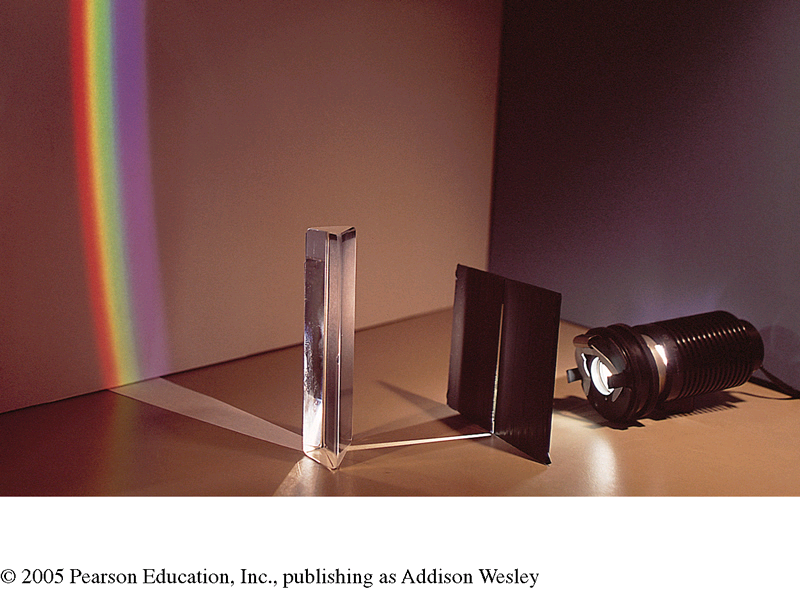Misconception: The spectrum is divided into only seven colours
Concept Corrected: The spectrum is a gradient in which we perceive many hues
White light enters the prism from the right, and exits on the left. We see the coloured spectrum when it reflects from the white wall.
When we send a beam of white light through a prism, it is broken down into a beautiful range of vivid hues called the spectrum.
The acronym ROYGBIV is so well known, many people think here are just seven colours in the spectrum. Not true! We can perceive many more colours (actually hues) in the spectrum.
Image of the spectrum: how many colours (or hues) can you see?
Historical depiction of Isaac Newton directing a beam of sunlight through a prism and creating a spectrum.
If you look closely at the spectrum, you will see that it is a continuous range or gradient of hues. There are many more than seven! This ‘famous seven’ colours comes from the work of Sir Isaac Newton. In Newton’s studies of light, prisms and colours, he assigned seven principal colours to the spectrum: Red, Orange, Yellow, Green, Blue, Indigo and Violet, although he acknowledged that we perceive a continuous range of colours in the spectrum, not just seven.
In his letters to the scientific community, he describes the spectrum as consisting of five Original or primary colours: red, yellow, green, blue and a violet-purple, together with orange and indigo, and an ‘indefinite variety of Intermediate gradations’. In naming seven colours, Newton tried to relate the coloured divisions of the spectrum to the intervals between notes in a musical octave. Newton felt that since light and sound were both natural phenomena, they would have similar relationships. (Although we know today that this is not the case.) Newton recognized that the number of colours in the spectrum depended upon how closely you looked, and could indeed be ’indefinite’.
Note that the spectrum does not contain all the colours we can see. The image at the top shows how the spectrum denotes a range of the most vivid hues. See the related misconception the rainbow contains all the colours we can see.
Try this!
How many hues can you see in the spectrum?
Download the Examining the Spectrum Instructions and Template
Try it with a friend - see who can see the most hues in the spectrum.
FIND OUT MORE:
A good video on Newton’s experiments with light, colour and prisms: The Beauty of Diagrams - Newton’s Prism (BBC)







